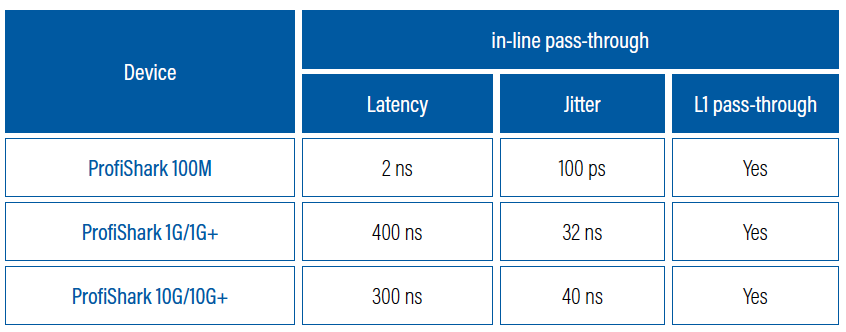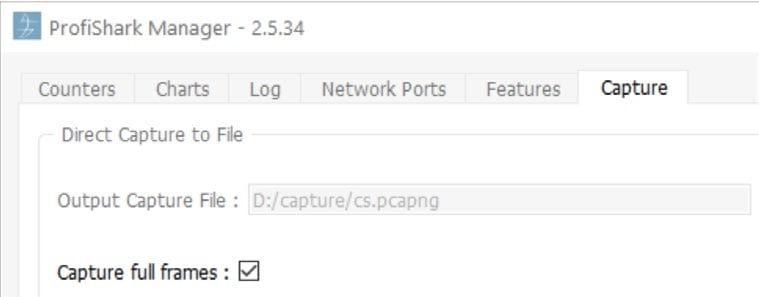Capturing in TSN environments
Time-Sensitive Networking (TSN) is a set of standards defining mechanisms for the time-sensitive transmission of data over Ethernet networks. Deterministic communication is critical to multiple industries (Audio Video Bridging, Automotive, Industrial and Power automation, Mobile Fronthaul Networks).
The purpose of the following article is to demonstrate the benefit of ProfiShark 1G in TSN environments and to describe its usage. In order to support TSN, a TAP has special requirements in terms of latency, jitter and capture capability.
Transparent In-Line
Like all Profitap’s in-line TAPs, the ProfiShark is protocol agnostic and L1 passthrough for all frames, tags, and encapsulations. This includes preempted frames (IEEE 802.1Qbu/802.3br), fragmented and CRC-invalid frames.
The in-line latency and the jitter introduced by the in-line circuit is minimal, making it suitable for IEEE 802.1AS and 1588 v2.

Capture Capabilities
The ProfiShark 1G is capable of capturing any type of frame, including preempted frames (IEEE802.1Qbu/802.3br), fragmented and CRC-invalid frames.

Moreover, the ProfiShark Manager offers an option to capture the entire L1 Ethernet frame in direct capture. When ‘capture full frames’ option is enabled, the frames are captured with the preamble (0x55), the SMD and the CRC.

Wireshark Integration
With ‘capture full frames’ option enabled, the PCAP-NG Link-Layer Header is set to LINKTYPE_ETHERNET_MPACKET. This Link-Layer type is fully supported by Wireshark since 2.6.0 and allows proper dissection of L1 frames (see Wireshark view below). Once dissected, the additional L1 data is displayed in the Packet detail view and doesn’t conflict with higher protocols. Additionally, fragmented preempted frames can be reassembled in Wireshark.

The ProfiShark Manager offers different capture options. The different capture options and their effect are listed below.
